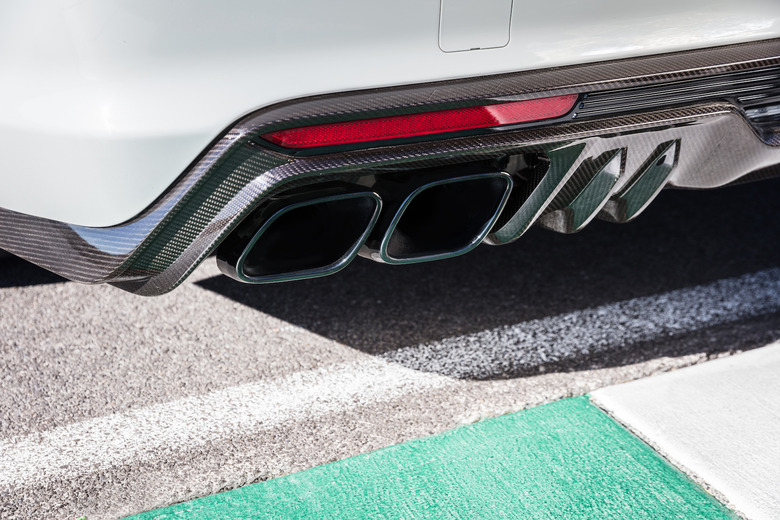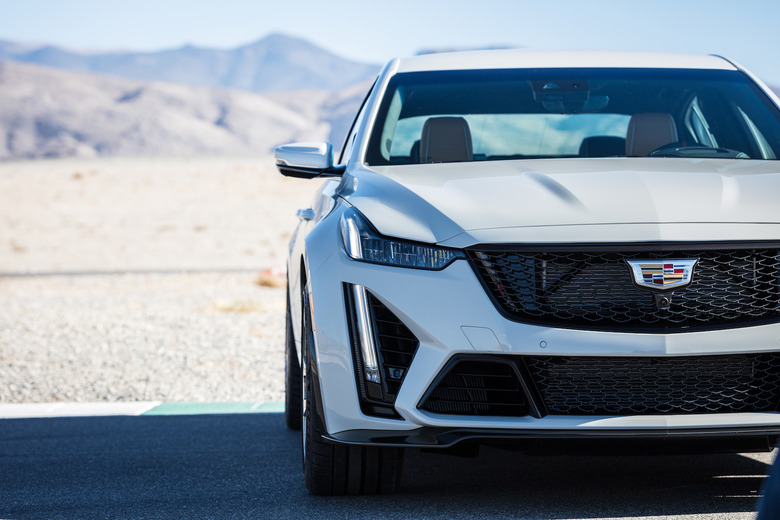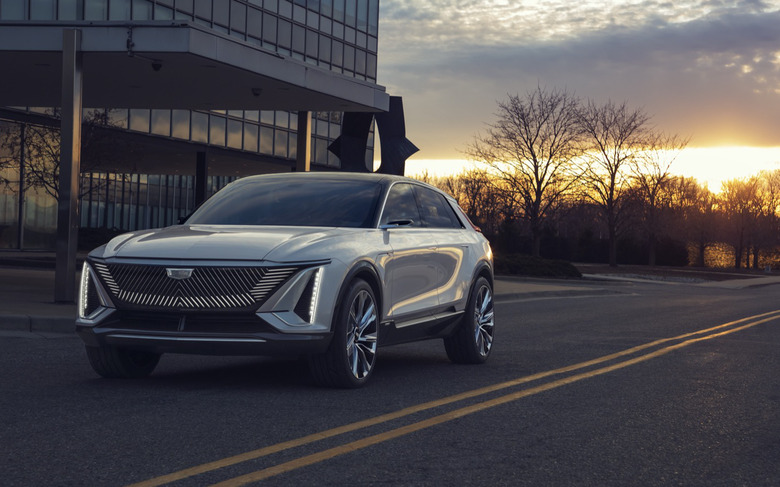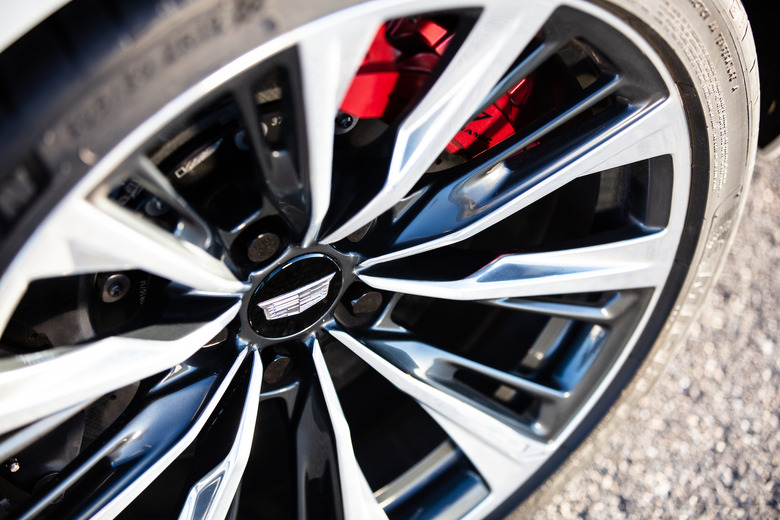Hello Blackwing, Goodbye Gas: Cadillac's New Super Sedan Faces Down Electric Future
As last hurrahs go, it's hard to find fault with 668 horsepower and a six-speed stick shift. The 2022 Cadillac CT5-V Blackwing not only introduces the automaker's new luxury performance halo brand, but acts as a loud, potent reminder why plenty of people love big V8 gas engines. It's also, however, likely the last of its breed.
Cadillac's pitch for Blackwing hadn't exactly been a mystery. Teased for months now, the CT5-V Blackwing – and its smaller, less powerful, and slightly more attainable CT4-V Blackwing sibling – was to be a love letter to sports sedan enthusiasts.
Nothing electrified here, just a 6.2-liter supercharged V8 doing what blown engines do best: pump out all those horses and a whopping 659 lb-ft of torque. If you want the automatic, you'll have to add it specifically: Caddy makes its manual transmission standard. Where there's technology, like Magnetic Ride Control and an electronic limited slip rear differential, it's all in the name of bringing that old-school power most effectively to the asphalt.

Even before the paint has been applied, though, the new CT5-V Blackwing feels like it's singing a familiar old song. The car it succeeds, the much-loved CTS-V, followed an almost identical approach. Indeed, the V8 engine is a hand-me-down, massaged and tweaked for MY22 duty here, but definitely no vision of the future.
Cadillac is fairly blunt about the reality post-CT5-V Blackwing. The days of purely gasoline vehicles are numbered, and while these halo cars may have been a labor of love for the engineers involved, there's also a recognition that the writing is on the wall. Electric vehicles are no longer the slow, pious things they once were: look, for ample evidence of that, to Tesla's recently-refreshed Model S, where even the non-performance version does 0-60 mph in 3.1 seconds, over half a second faster than the burliest Blackwing.
Still, for all its gung-ho commitment to internal combustion this time around, Cadillac has been cunning in how it left the door open for alternatives. It'd be easy to look at these first Blackwing cars and assume that their lineage will be one of resolute unwillingness to embrace electrification or any "new fangled" drivetrain technology. The reality, I suspect, is that GM's engineers are far more pragmatic.

You only need look to its attitude toward where all those CT5-V Blackwing horses are funneled to see that in action. The new sports sedan is rear-wheel drive, despite a general shift in the industry to all-wheel drive models. Asked why that decision was made – since the CT5-V is available in AWD – executive chief engineer Brandon Vivian was blunt.
"We have a very strong guiding principle, if it doesn't make the car faster on the race track then it doesn't go on the car," Vivian explained. "AWD doesn't make them faster, so it's not offered on the Blackwing."
When it comes to justification, it's pretty open-ended. You could just as easily imagine Vivian saying "triple electric motors make the car faster on the race track, so that's why we're offering them": the ends justifying whatever means are necessary.

GM – and thus Cadillac – are on an electrification mission. By the end of 2025, 40-percent of vehicles sold in the US by GM's brands will be battery-electric. It's investing massively into its new Ultium platform, an EV-focused architecture that'll be just as capable of massive performance as it is frugal range. That'll underpin not only the upcoming Cadillac Lyriq luxury crossover, but several other models from the automaker.
You can be certain that the Ultium investment – even just in Caddy terms – far outweighed the spend on these two new Blackwing cars. General Motors knows in which direction the headwinds are pointing. Keen drivers, meanwhile – distinguished here from internal combustion fans – should probably be even more excited about that transition. The days of three or four motor electric drive, with zero torque lag and true torque vectoring are fast approaching, after all. They'll make far more of a difference to how a performance car delivers on the track or on the road than bolting on a bigger supercharger or baking no-lift shift into the transmission.

Better, then, to see the 2022 CT5-V Blackwing as a bookend, and as a benchmark by which Cadillac's efforts to come can be measured. Blackwing isn't just one or two cars, its a series: "the highest level of execution from Cadillac," Vivian insists. With a 6.2-liter supercharged V8 the gauntlet has been thrown down, and that's an alluring target for a Blackwing EV to try to smash.
